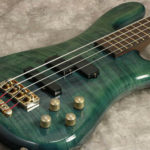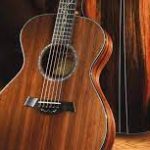DISTORTION PEDALS
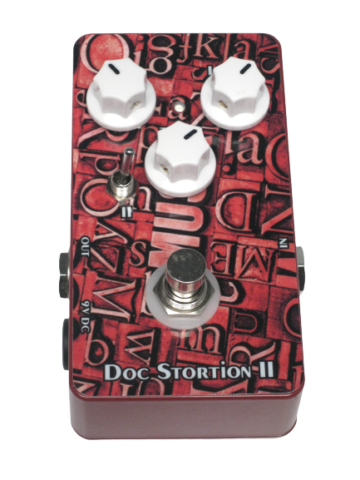
A distortion pedal is a stompbox that connects to your signal chain. Whereby, when this pedal is active it will apply a gritty overdriven texture to your tone.
Put the pedal to the metal
It all started in the early 1960’s when guitarists decided that overdriving their amplifiers with too much gain wasn’t so much of a mistake as it was a nice effect to exploit. If your style of music is metal, then distortion is the ultimate pedal for you.
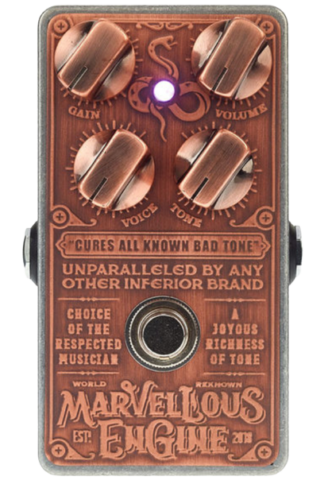
These pedals are designed for creating devastating riffs, high gain tones, and high octane solos. The most important pedal on any metal guitarist’s effects board is the mighty distortion pedal. everything from a warm, gritty edge to a full blow growl, these pedals are the weapon of choice for recreating the tone.
Distortion is the resulting effect imparted on an audio signal when its gain is driven higher than specific components in the signal chain are expecting. Usually this is referring to a vacuum tube or a woofer in an amplifier, a transistor, or other electronic elements.
The sound itself becomes tighter in volume since the peaks are clipped, reducing the amplitude gaps between the peaks and troughs. The method of achieving this results in a broken up and “gritty or dirty” tone, but one more harmonically pleasing with a complex layering of overtones injected into the signal. It’s hard to describe but once you’ve heard it like we all have, you’ll know it.
All of the reputable distortion stomp boxes these days aren’t going to disappoint you. They’re made with high quality components by experienced companies that know what guitarists want.
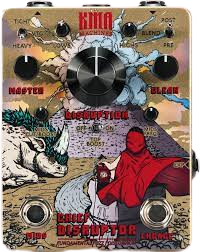
TYPES OF DISTORTION PEDALS?
Distortion – Distortion adds a consistent crunch or growling to what you’re playing. While an overdrive takes your original tone and pushes it harder, a distortion pedal is more like a narcissistic friend that they don’t really care about how you are trying to sound.
WHERE TO PLACE IT IN THE SIGNAL CHAIN
First off, never put distortion in your amplifier’s effects loop. It should come before that so it drives the preamp for extra goodness.
Also, it needs to come in at a specific stage of your pedal chain, which is defined by logic and the necessity of the needs of other effects and how they can ruin each other. It looks like this:
Dynamics, Filters, & Pitch Shifters
Boost & Distortion
Modulation
Time
Distortion comes in with boost in what is often called the Gain effects group. The reason is that you want to shape your waveform first with noise gating and compression and then establish the pitch if you’ll use a shifter or harmonizer. If you’re using a boost pedal to drive your distortion, then that comes first too. That’s where you want your distortion pedal.
Many guitarists run their distortion pedals at the beginning of the chain. You should use compressors at the start, so you receive your signal with a consistent volume. Keep in mind, if you are using an overdrive pedal, it should also go before distortion. Overdrive causes distortion, and using them together is called gain-stacking.
If you add other effects, like flanger and phaser, they should go after, because you don’t want to phase out the sound of the overdriven signal. The same goes for effects that change the pitch. Distortion creates many more harmonics in your sound, and altering the pitch sometimes creates unexpected sounds.

Unlike others, distortion pedals typically all have the same set of knobs and it doesn’t vary much at all. You’ll find a Level knob to control the volume at the output. There will be a Gain knob (sometimes called Drive) to control the amount of distortion being applied by feeding more volume at the input.
There’s usually a Tone knob (sometimes called Treble) that lets you adjust the amount of brightness you prefer. And finally there’s many times a Mode knob for pedals that have various styles of the main distortion effect for you to choose from. That’s it. It’s a very simple effect to use and control.
One of the key elements of crafting the perfect distortion sound comes from the tone. Most pedals will give you the option to alter the tone of the distortion, which is very similar to altering the tone directly on your guitar. Going to the right will ‘brighten’ your sound by turning up the higher frequencies, while moving to the left will give more ‘warmth’ by focusing on lower frequencies.
With the right distortion pedal in your pedalboard, you can use this as your main dirt sound without using the gain from your amp. Again the perfect distortion sound depends on your personal taste
Unlike amps, a distortion pedal allows the user to adjust the core sound of your distortion sound, whether that’s tweaking the gain, bass, mids, or top end. Whereas, an amp only offers the gain dial to adjust saturation.
This becomes useful for genres such as metal. Metal players mostly play close attention to the mids when sculpting their heavy and snarling metal tone.
A pedal gives them more control over their distortion sound whether they are scooped or subtle, depending on the sub-genre.
Recommended Distortion Pedals
One Control Dyna Red Distortion
This is the latest evolution of the Dyna Red, with many tweaks learned along the way, and a brand new fourth knob (4K) that helps dial this pedal in precisely for a wider variety of amplifiers as compared to the original models.

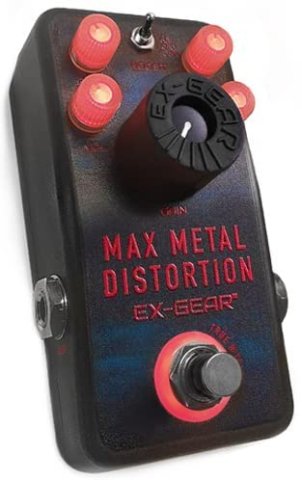
Max Metal High Gain Distortion
Power-house, Over-the-top, Mosh Pit Expression. The Max Metal Blazes Through the Mix with a Powerful, Grinding Sound. Epic Sweeping Power Chords and Balanced Articulation for In-your-face Soloing Define the Max as the Pedal for the Guitar Shred Master. Get your Metal Face on with the Max Metal.
Revv Amplification G4 Distortion
Revv G4 Saturated Red Distortion Revvs Red Channel 4 is a thick gain monster that still has the nuance to cover oldschool tones. The G4 is an amp-voiced pedal based on this tone used by premier touring & recording guitarists worldwide.
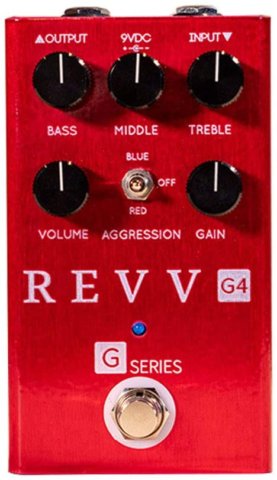
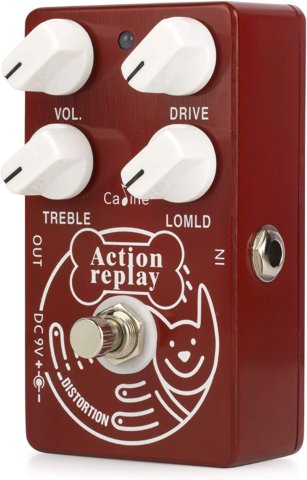
Caline Distortion
The Caline Action Replay Distortion is inspired by the Dyna Red famous Plexitone sound and that identifiable classic rock distortion. Wide and dynamic control from just above overdrive to a crunchy distortion with lots of low dirt and growl when required.
MXR Custom Badass™ '78 Distortion
The MXR Custom Badass ’78 Distortion is a factory-modded pedal that roars with huge amp stack tones and old school tube amp-like distortion.
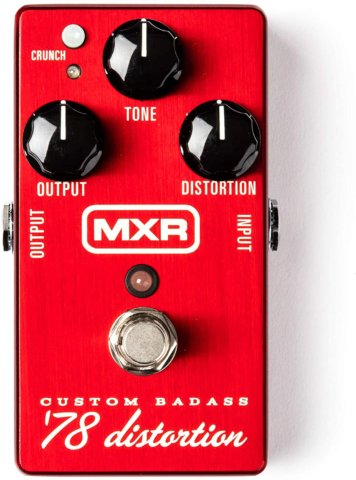
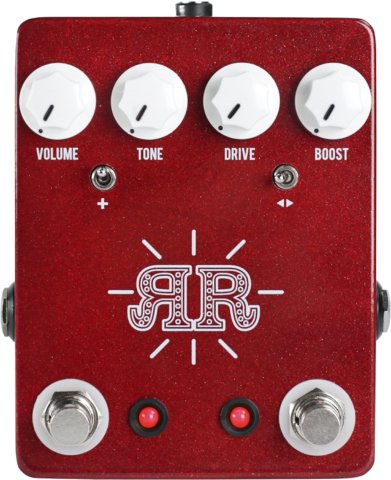
JHS Ruby Red
The independently footswitchable 2-stage boost that we put into the Ruby Red transforms it from an amp-in-a-box pedal to pure sonic muscle. It can drive your amp, drive the SuperBolt circuit, and even conjure some of the fattest fuzz tones this side of…the other JHS fuzz pedals.
JHS Angry Charlie V3 Distortion
The Angry Charlie has become a staple of the JHS line, and it’s a force to be reckoned with in the high-gain pedal territory. Its ability to convincingly and accurately breathe JCM800 tones into any rig makes it a popular choice for all genres.
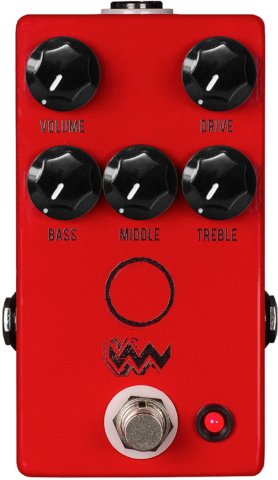
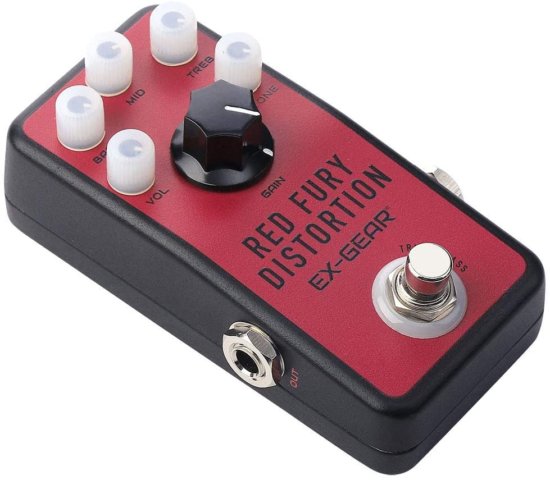
EX-GEAR Red Fury Distortion
The Red Fury Distortion is best know for it’s classic hard rock tone. Best sounding through a clean amp, this pedal will make your guitar sing. The illuminated foot-switch and controls make it easy to see on a dark stage.
The beauty of distortion pedals is that you can alter the core tone of your amp altogether. Keep your amps gain on 0 and use your desired distortion pedal as your primary method for adding dirt to your signal chain.
However, pedals are so popular because they can change your sound. Distortion pedals can be used to enhance and complement your amp’s tone. They offer a varied blend of sounds to create something new and unique.
completely.




























